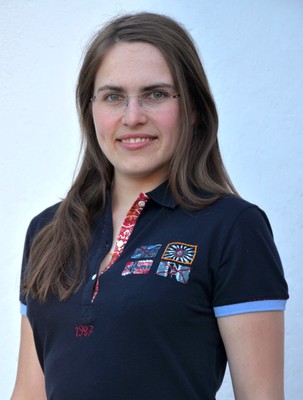Susanne Heid
Susanne Heid
Simultaneous 3D printing of biofabricated constructs and tailored bioreactors for regenerative approaches
Betreuer: Prof. Dr.-Ing. habil. Aldo R. Boccaccini
Mitarbeiter: Dr.-Ing. Rainer Detsch
Modern biofabrication processes have the potential to manufacture implants which can be precisely adjusted to a defect and which can even be loaded with cells [1, 2]. Applications like e.g. muscle defects or skin wounds can benefit from biofabrication methods because they need a high degree of individualization and flexibility. Due to the complexity of the native tissues usually specific conditions have to be established after 3D printing for the cultivation and maturation of the biofabricated constructs and to maintain the supply of cells with e.g. nutrients and oxygen [2, 3]. The aim of this project in the framework of the DFG funded SFB/Transregio TRR 225 („From the fundamentals of biofabrication towards functional tissue models“) (TP B03) is the development of a composite bioink based on oxidized alginate (ADA) [4] with tailorable mechanical properties and degradation rate. At the same time thermoplastic materials are evaluated and tested for their suitability in the 3D printing process of bioreactors. Finally, when the materials are optimized sufficiently, the main aim is the integration of cell loaded hydrogel composites into a bioreactor which will be realized by simultaneous printing of the materials.The project will be carried out in close collaboration with Dr. J. Hansmann (University of Würzburg) and Dr. Sahar Salehi (University of Bayreuth).
[1] Zehnder, T. et al.; Fabrication of Cell-Loaded Two-Phase 3D Constructs for Tissue Engineering; Materials; 9 (11); 887; 2016.
[2] Hansmann, J. et al.; Bioreactors in tissue engineering – principles, applications and commercial constraints; Biotechnology Journal; 8 (3); 298-307; 2013.
[3] Naghieh, S. et al.; Dispensing-based bioprinting of mechanically-functional hybrid scaffolds with vessel-like channels for tissue engineering applications – A brief review; Journal Mech. Behavior Biomed. Mater. 78; 298-314; 2017.
[4] Reakasame, S. et al.; Oxidized alginate-based hydrogels for tissue engineering applications: A review; Biomacromolecules 19; 3-21; 2018.

